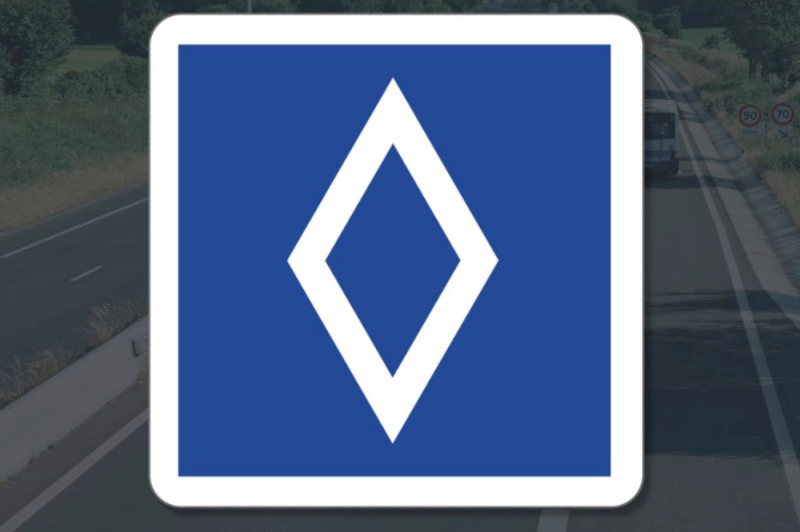
© X/DIR_Ouest
This new road sign is multiplying on the roads of France and it attracts the attention of motorists – while sometimes causing confusion. This sign which represents a white diamond on a blue background or a luminous diamond on a black backgroundindicates lanes reserved for carpooling. First appearing in September 2020 on the A48 motorway between Grenoble and Lyon, it is now widespread in many French cities.
Reduce traffic jams
This signage was introduced by the 2019 mobility orientation law (although it has existed for much longer in the United States, for example) and aims to encourage vehicle sharing and reduce traffic congestion and greenhouse gas emissions. The lanes marked with this sign are reserved for vehicles carrying at least two people, public transport, taxis, and very low-emission cars (Crit’Air 0 sticker).
The use of these lanes may be permanent or limited to certain times, generally during rush hourIn the latter case, the application times are indicated on a sign under the main symbol or the diamond may light up when the restriction is active. White markings on the ground often complement the signage.
🤔Enquête sur le #panneau mystère ! Vous allez bientôt voir apparaître ce nouveau symbole étrange sur la #route. On vous explique !
Il représente une voie spéciale pour les transports en commun et les conducteurs pratiquant le #covoiturage
Plus d'info > https://t.co/8JZ2s4bmw6 pic.twitter.com/vFYAJ7ejNw— DIROuest (@DIR_Ouest) July 12, 2023
Make way for radars
To enforce these new rules, “intelligent” radars capable of detecting the number of people on board vehicles have been installed along these lanes and offenders are now liable to a fine of 135 euros. This measure is part of the government's objective of tripling the number of shared journeys by 2027, whereas currently, carpooling only represents 3% of journeys in France.
The deployment of these signs is accelerating throughout the country: after Lyon, Grenoble and Strasbourg, they appear in the Paris region and are planned for Rennes, Nantes, Lille, Aix-en-Provence and Marseille. This evolution of road signs shows the desire to transform the travel habits of the French by promoting more ecological and more efficient modes of transport in terms of use of road space.
📍 To not miss any news from Presse-citron, follow us on Google News and WhatsApp.

